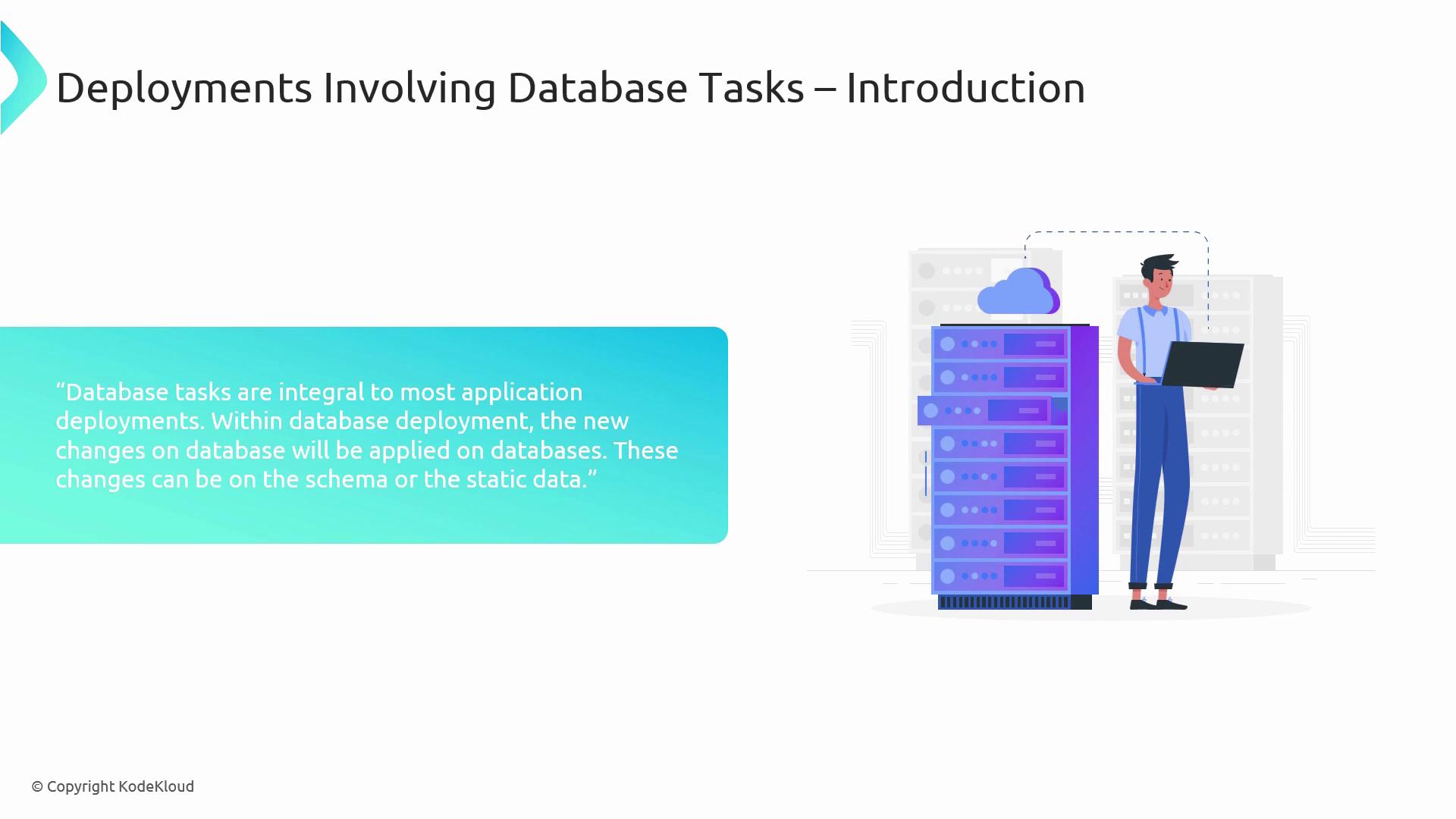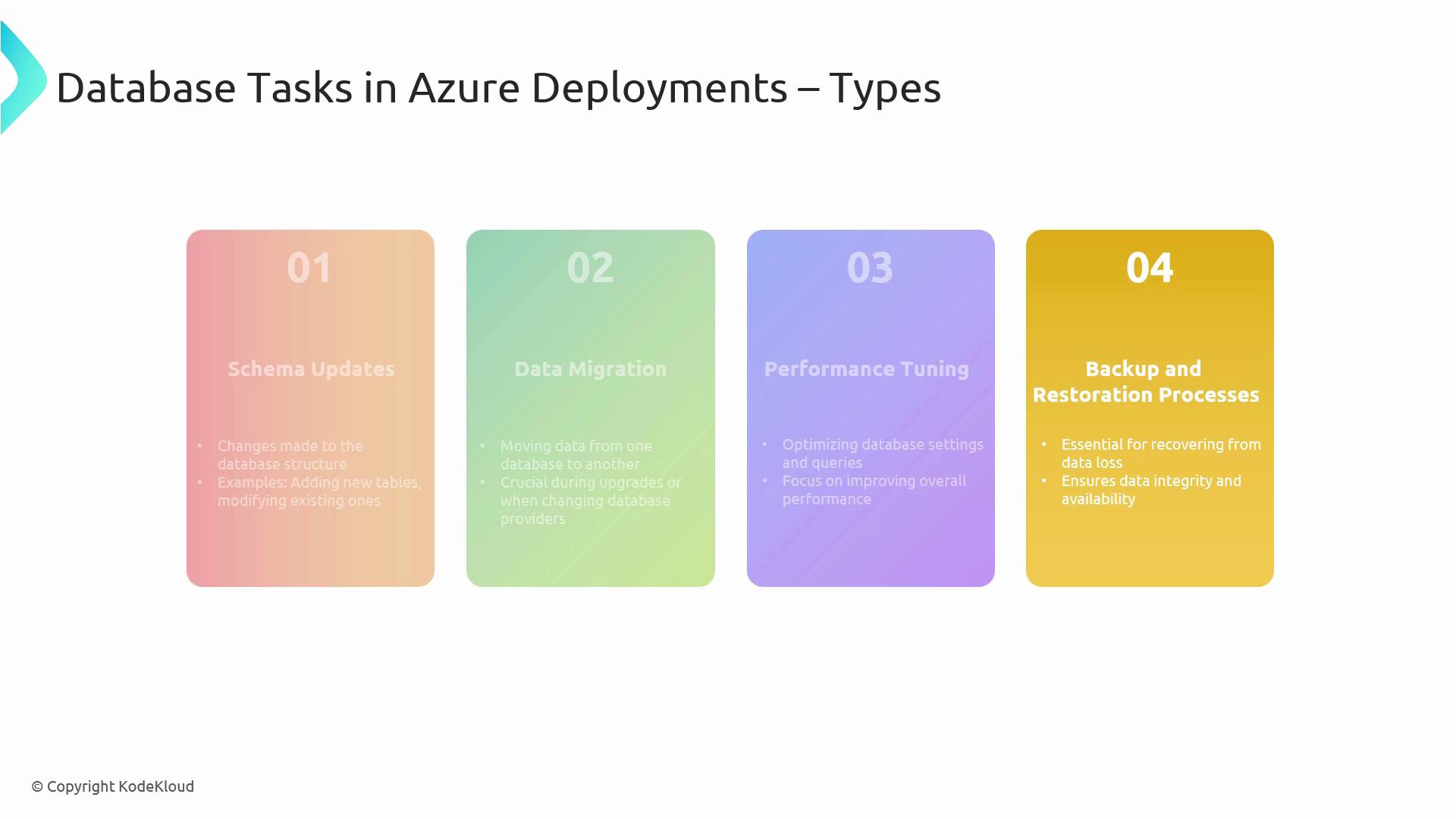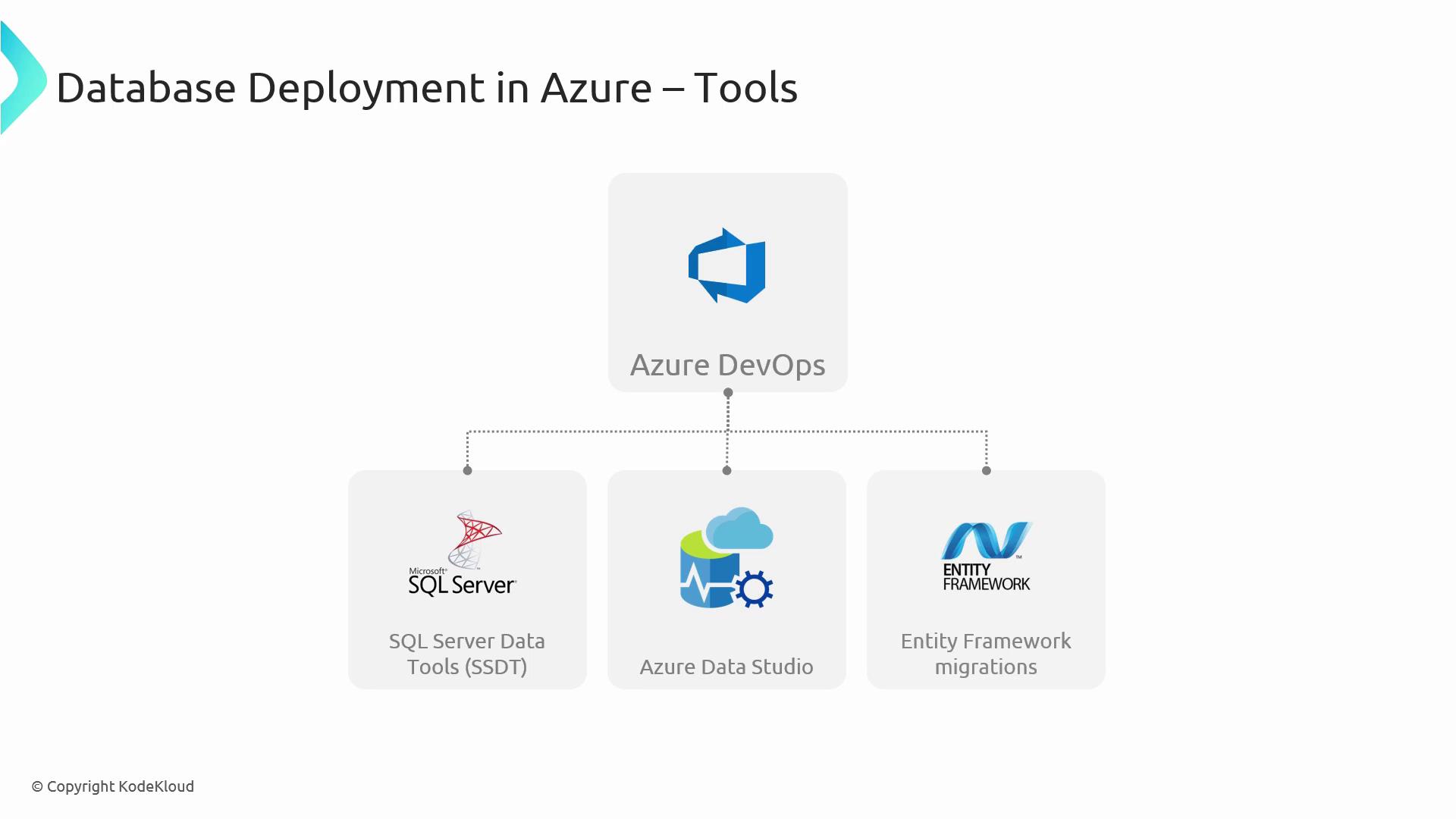AZ-400: Designing and Implementing Microsoft DevOps Solutions
Design and Implement Deployments
Implement a deployment that includes database tasks
In this guide, you’ll learn how to design and execute Azure deployments that include critical database operations. Handling schema changes, data migrations, performance tuning, and backups as part of your CI/CD pipeline ensures data integrity, minimizes downtime, and keeps your application and database versions in sync.
Why Database Tasks Matter in Deployments
Database updates often accompany application code changes—whether modifying table structures, migrating existing data, or tuning performance. Properly sequencing and automating these tasks in your pipeline reduces risk and ensures smooth rollouts.

Balancing Safety and Speed
DevOps strives for fast, reliable releases. When database changes are involved, you must prevent data loss or corruption while keeping downtime to a minimum. Automate every step—from generating migration scripts to running post-deployment checks—to strike the right balance.

Four Key Database Task Types
Plan your deployment by categorizing database work into these four areas:
- Schema Updates
Add or modify tables, columns, indexes, and constraints. - Data Migration
Move or transform existing data to fit the new schema. - Performance Tuning
Optimize indexes, queries, or database configurations. - Backup and Restoration
Create and validate backups; prepare rollback procedures.

Azure Tools for Database Deployments
Use these Azure-native tools to streamline database operations:
| Tool | Purpose | Documentation |
|---|---|---|
| Azure DevOps | CI/CD pipelines that build, test, and deploy code and database changes | Azure DevOps |
| SQL Server Data Tools (SSDT) | Define and version database schemas; produce DACPACs | SQL Server Data Tools |
| Azure Data Studio | Lightweight SQL editor and management UI | Azure Data Studio |
| Entity Framework Migrations | Code-based migrations for .NET projects | Entity Framework Migrations |

Real-World Example: SSDT + Azure DevOps
Follow this workflow to add a new table and index to an Azure SQL Database using SSDT and Azure Pipelines:
- Create or Update SSDT Project
In Visual Studio, define schema changes (new table, index). - Commit to Version Control
Push your SSDT project to Azure Repos (Git). - Configure the CI/CD Pipeline
Build the solution, generate the DACPAC, and deploy it. - Validate Post-Deployment
Run automated tests or manual queries to confirm success.

Sample Azure Pipelines YAML
trigger:
- main
pool:
vmImage: 'windows-latest'
variables:
solution: '**/*.sln'
buildConfiguration: 'Release'
dacpacPath: '$(Build.ArtifactStagingDirectory)/db/MyDatabase.dacpac'
steps:
- task: NuGetToolInstaller@1
inputs:
versionSpec: '5.x'
- task: NuGetCommand@2
inputs:
restoreSolution: '$(solution)'
- task: VSBuild@1
inputs:
solution: '$(solution)'
configuration: '$(buildConfiguration)'
- task: PublishBuildArtifacts@1
inputs:
pathToPublish: '$(Build.ArtifactStagingDirectory)'
artifactName: 'db'
- task: SqlAzureDacpacDeployment@1
inputs:
azureSubscription: '$(AzureServiceConnection)'
AuthenticationType: 'servicePrincipal'
serverName: '$(SqlServerName).database.windows.net'
databaseName: '$(DatabaseName)'
deployType: 'DacpacTask'
DeploymentAction: 'Publish'
DacpacFile: '$(dacpacPath)'
SqlUsername: '$(SqlUser)'
SqlPassword: '$(SqlPassword)'
Note
Store sensitive values like SqlPassword and service connections in Azure Key Vault or secure pipeline variables.
Best Practices for Reliable Deployments
- Automate Everything
Combine application and database steps in a single pipeline to prevent version drift. - Use Representative Environments
Test changes in staging instances that mirror production. - Validate and Monitor
Run integration tests post-deployment and monitor performance metrics. - Have a Rollback Plan
Keep backups or leverage DACPAC drift detection to revert if needed.
Warning
Never apply untested schema changes directly to production. Always verify deployments in a safe environment first.
Links and References
Watch Video
Watch video content